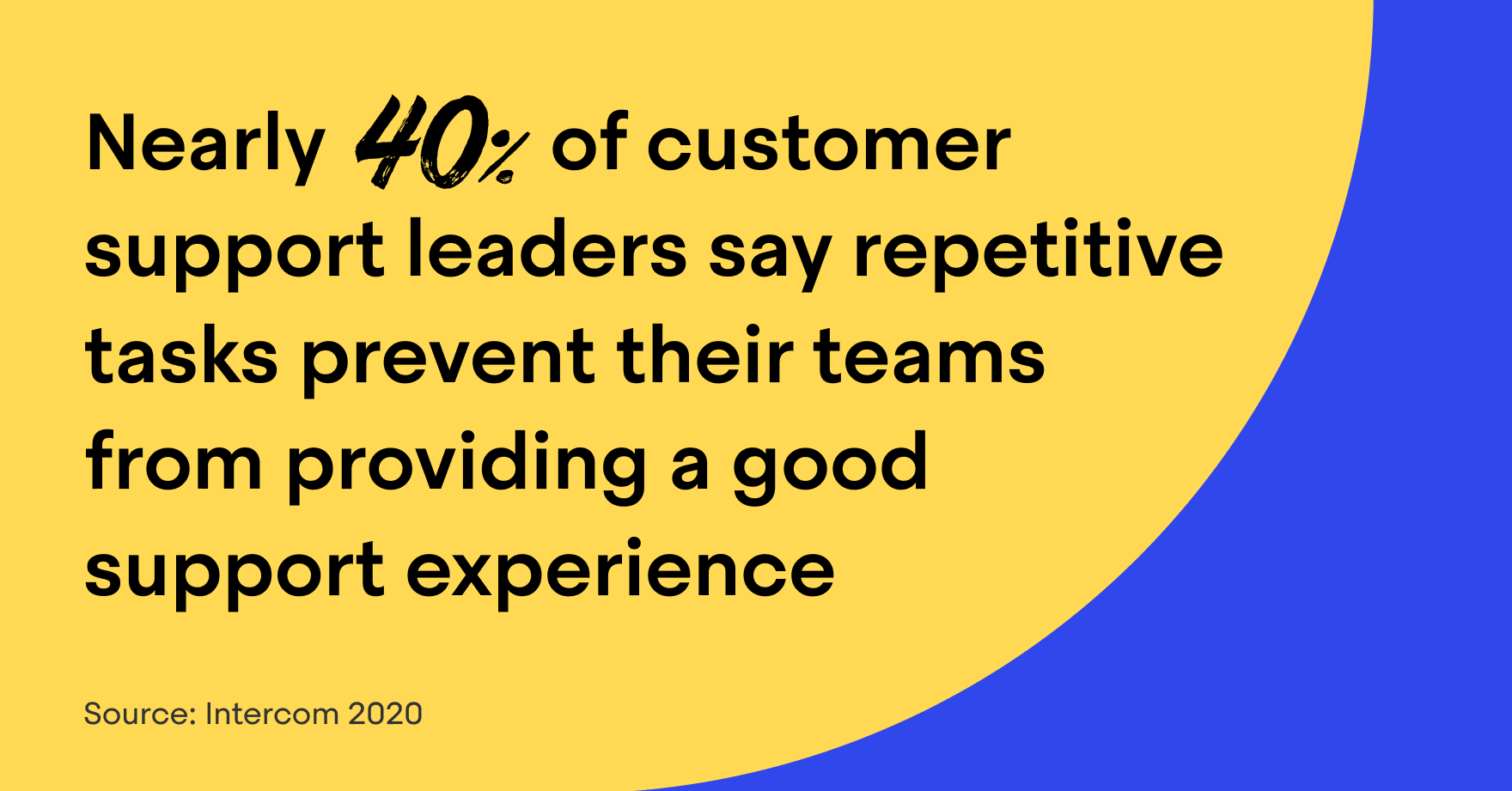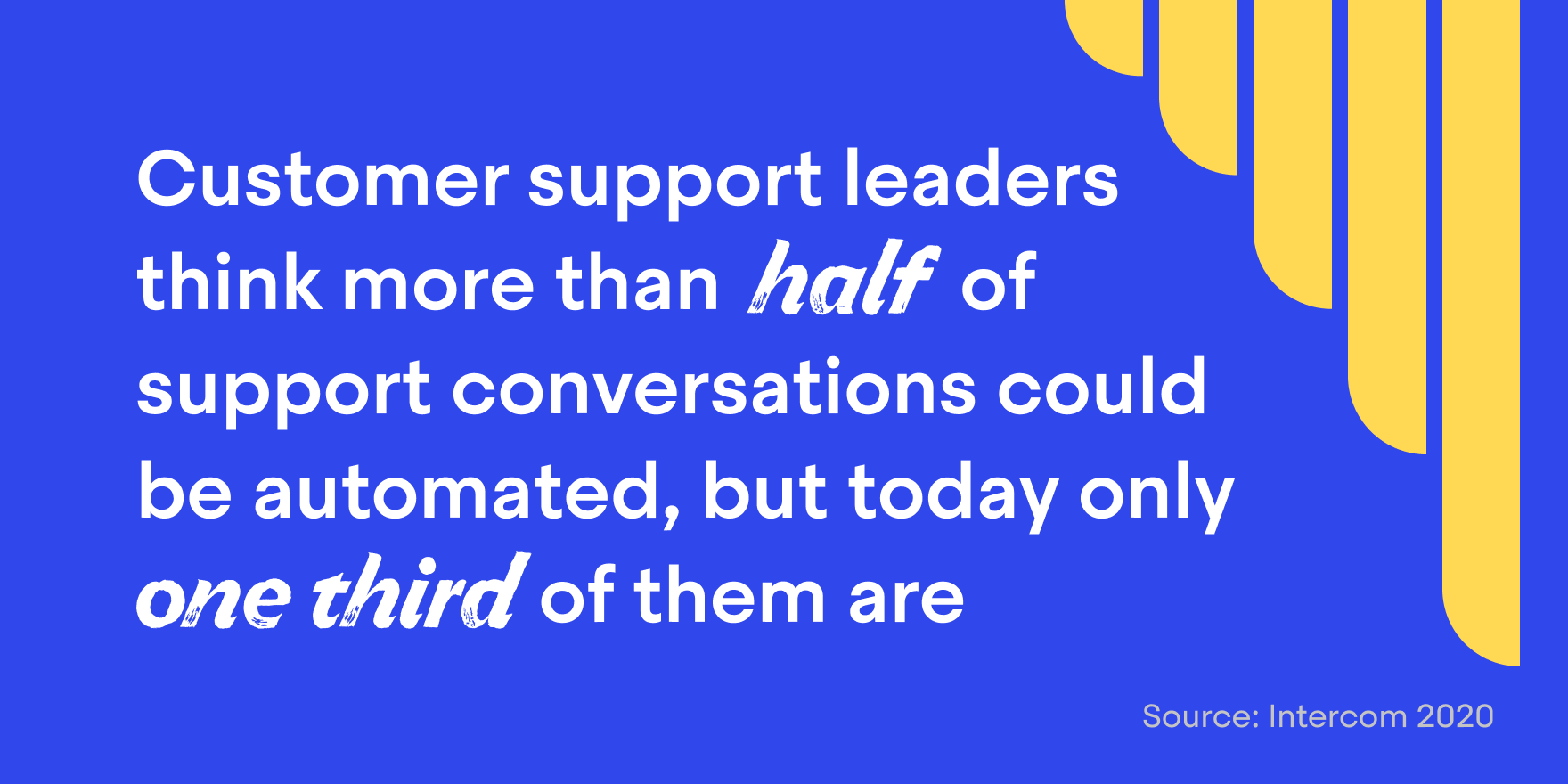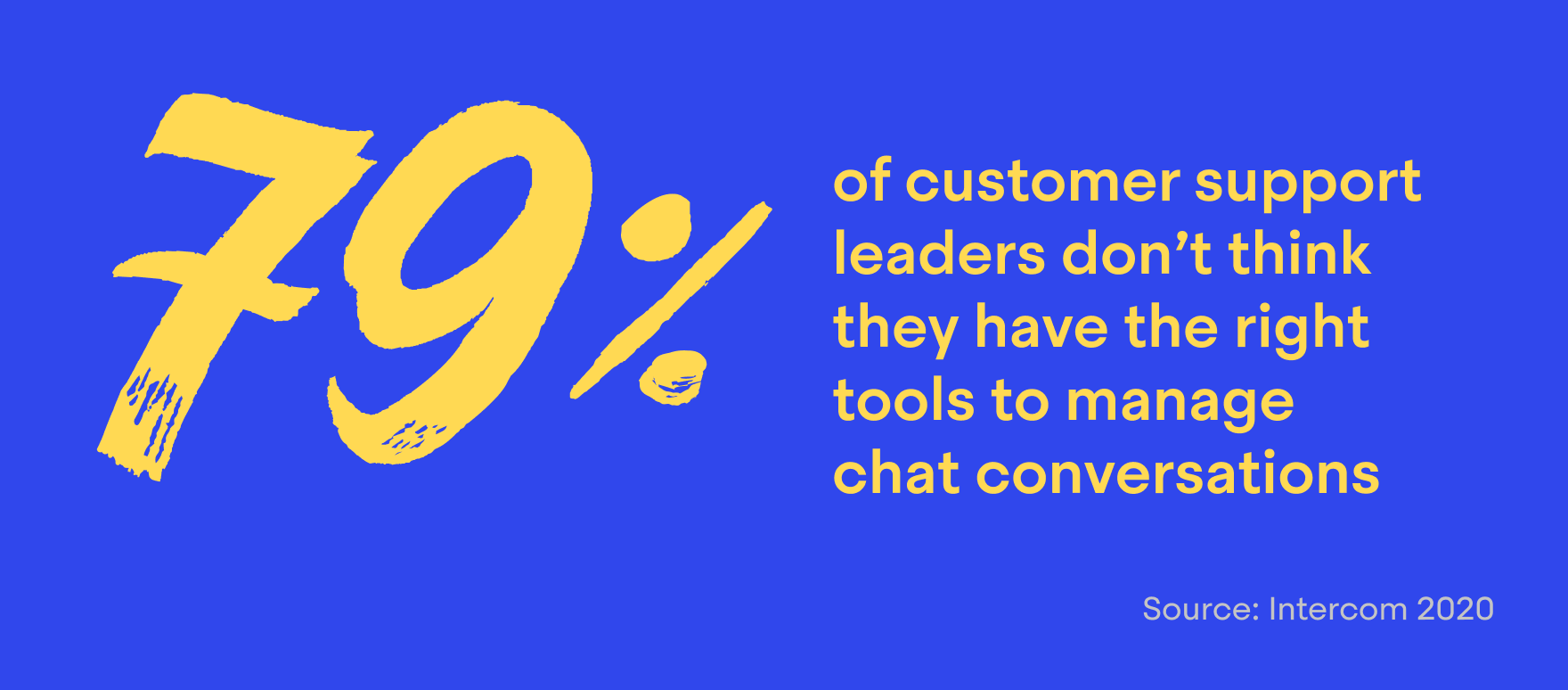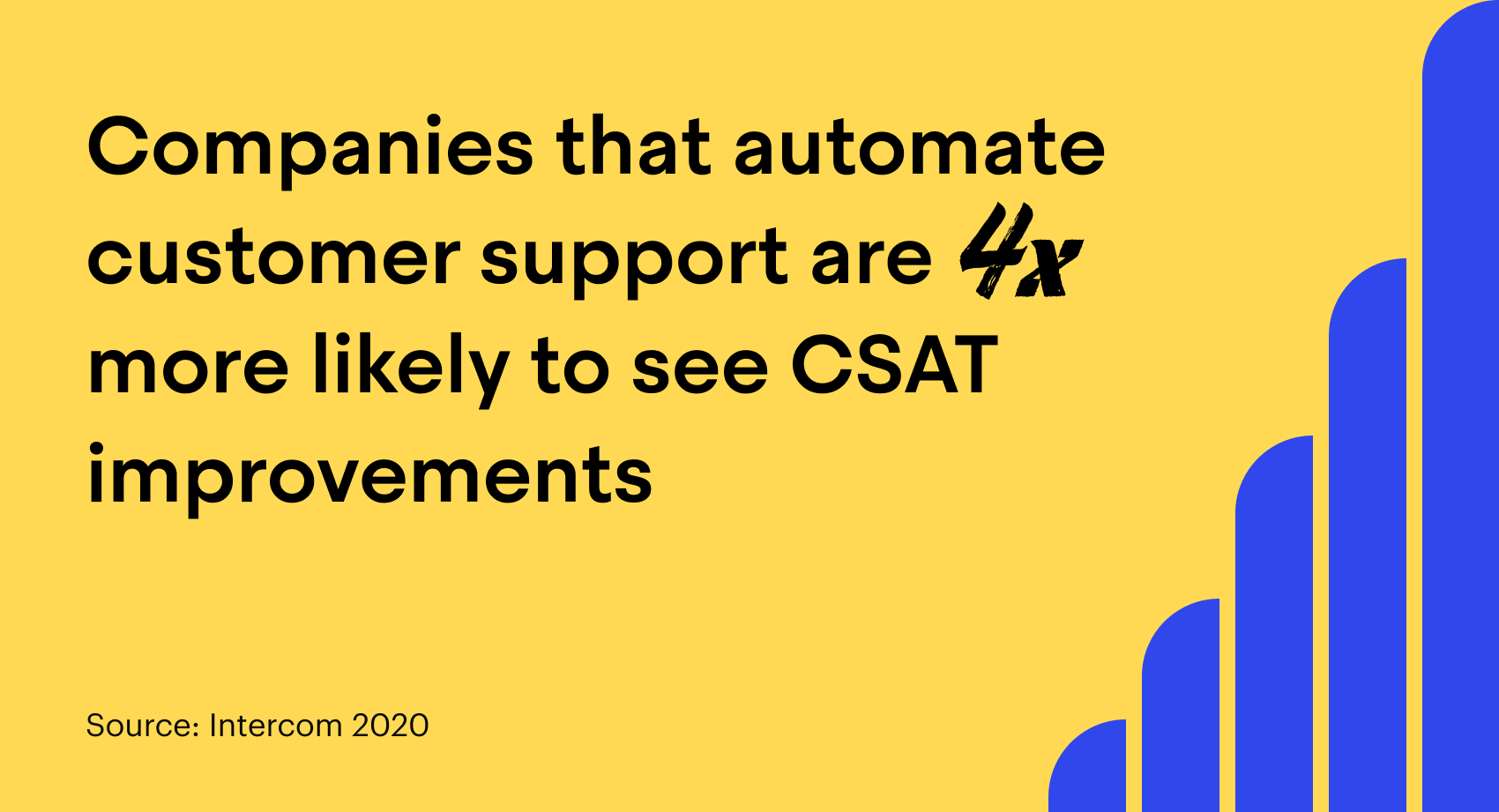
Transforming customer support with automation: Key trends and challenges for support leaders
Companies that automate support are 4x more likely to see CSAT improvements, according to a survey we conducted with support leaders. That’s an incredible statistic – but how can these benefits be realized?
Today, support teams are navigating an increasingly demanding support landscape. With customer expectations and conversation volumes on the rise, businesses need a way to effectively deliver on-demand, personal support while maintaining customer satisfaction. Automation supercharges support, empowering teams to provide personal support at scale without overstretching your team – and our data shows support leaders are hungry for more.
To understand the way support leaders are thinking about automation, we worked with an independent market research firm to survey a random sample of 404 customer support leaders across both B2B and B2C industries in several sectors, including retail, healthcare, and technology. We asked them about their greatest challenges and opportunities in scaling and implementing automated support, like chatbots and automated workflows.
The results reveal a clear appetite and need for automation to meet the challenges of a rapidly evolving support environment:
- Companies that automate customer support are nearly 4x more likely to see CSAT improvements.
- While a third of support conversations are currently assisted by automation, support leaders think more than half of them could be.
- Some 35% of customer support leaders believe their business should increase its automation budget for customer support.
- Nearly 40% of customer support leaders say managing repetitive tasks is negatively impacting their CSAT score.
- 79% of customer support leaders aren’t sure they have the right tools to manage their online chat conversations.
Below, we dive into the key trends from our research and reveal how support leaders can capitalize on the power of automation to tackle simple, repetitive tasks and resolve frequent queries.
Understanding the automation opportunity
Modern customers want quick, personal support, and support leaders recognize that a little automation can go a long way in bridging the gap between customer expectations and company resources. In fact, we discovered that 33% of customer support conversations are currently assisted by automation, and there’s a clear demand for more. Support leaders see an opportunity to strategically scale operations through automation. Now, they want to see more than half of their support conversations resolved by automated chatbots to meet modern customers’ expectations of timely, 24/7 support.

According to our survey findings, the biggest support automation challenges for companies are understaffing, the need for better employee training, and the need for better technology. Many support leaders recognize the value of investing in automation to stem the surge of customer queries.
Consumers are more empowered than ever before, and a negative customer experience can truly make or break your business. Some 35% of support leaders want to increase their automation budgets to get their teams off the customer queries treadmill and back to providing quality support at scale. But many believe that their automation budget will fall short of where it needs to be to deliver real impact for their team and the broader business. To achieve the buy-in they need for suitable support tools and infrastructure, support leaders need to highlight the opportunities for support as a value driver to the “powers that be.”

Modern chatbots can triage customer queries, tackle repeat requests, and route complex queries. With this in mind, it’s not surprising that it’s not only support leaders who want to modernize their workflows; the benefits of conversational support extend beyond the customer to your support team in the trenches.
The high cost of repetitive tasks
Our survey showed that 80% of support agents feel like they don’t have enough time to offer good customer experiences because they’re too busy doing repetitive tasks.
“Study after study shows a positive customer experience is essential for winning repeat business”
With conversation volumes on the rise, many teams feel unprepared to handle this tsunami of support requests. Nearly 40% of the customer support leaders we polled said that repetitive tasks prevent their teams from providing a good support experience. Study after study shows a positive customer experience is essential for winning repeat business, and many customers will simply stop buying from a company if they have a negative interaction. This makes clearing repetitive tasks off your team’s to-do list a top business priority, not a “nice to have.”

This is where automation can be a game-changer for frazzled support teams and their time-strapped customers. Simple repetitive tasks like password resets can be almost-instantly resolved by automated chatbots, reducing friction for both the customer and your team. But 79% of customer support leaders don’t think they have the right tools to manage chat conversations. Turning support into a profit center requires proper infrastructure and investment.

A common complaint among support teams is that they’re slowed down by workflows that don’t integrate with other teams. Investing in the right technology allows support reps to carve out time to focus on more complex and technical queries that require a personal, human touch.
Improved workflows increase collaboration
A seamless workflow empowers your team to collaborate with other departments to unearth patterns in consumer behavior and attributes such as what product pages they visited before reaching out and what device they used. Support reps can then weave these individual pieces of information together for a tactful customer follow-up or to rectify issues that are driving attrition rates.
Support leaders understand that customer satisfaction isn’t just a vanity metric – it’s a leading indicator for customer retention and loyalty. With automation, companies are 4x more likely to see improvements in customer satisfaction. Here at Intercom, we saved $400K with support automation and are set to increase this to $700K by the end of 2020.

With the right blend of proactive, self-serve, and human support, you can revolutionize your customer experience without disrupting existing CSAT scores and resolution times. The fundamentals of support haven’t changed. Good support is still efficient, personal, and deeply human. But the scale and expectations of customer service have dramatically increased and look set to continue on this trajectory.
What this means for support leaders
Embracing automated support is essential if businesses want to survive and thrive in the rapidly evolving support landscape. Our research shows the great opportunity for support leaders to boost their team’s efficiency with automation.
“Businesses who automate support are nearly 7x more likely than those that don’t to say they should increase their AI budget”
Those businesses that have already started automating their customer support can clearly see the benefits – our survey shows they are nearly 7x more likely than those that don’t to say they should increase their AI budget, a testimony to how beneficial automation is in practice.
Automation gives your team the time they need to provide support at scale. Support leaders intend to build on the results they’ve seen with proactive support, introduce seamless workflows that aid collaboration, and reinforce self-serve pathways with contextualized support to empower customers to resolve their own issues.
Modern support leaders know that the future of support is a strategic mix of proactive, self-serve, and human support – all enhanced and supercharged by automation. Our Conversational Support Funnel offers your team a way to get off the treadmill of customer queries and provide personal, messenger-first support at scale. Customizable workflows and routing will help you to empower customers to self-serve with contextual articles, reduce churn with delightful proactive support, and deliver VIP treatment for those valuable customers that require extra attention.
A note about methodology
Intercom commissioned an independent market research firm to survey a random sample of 404 support managers and leaders. The study’s margin of error is +/-4.87% at the 95% confidence level.







